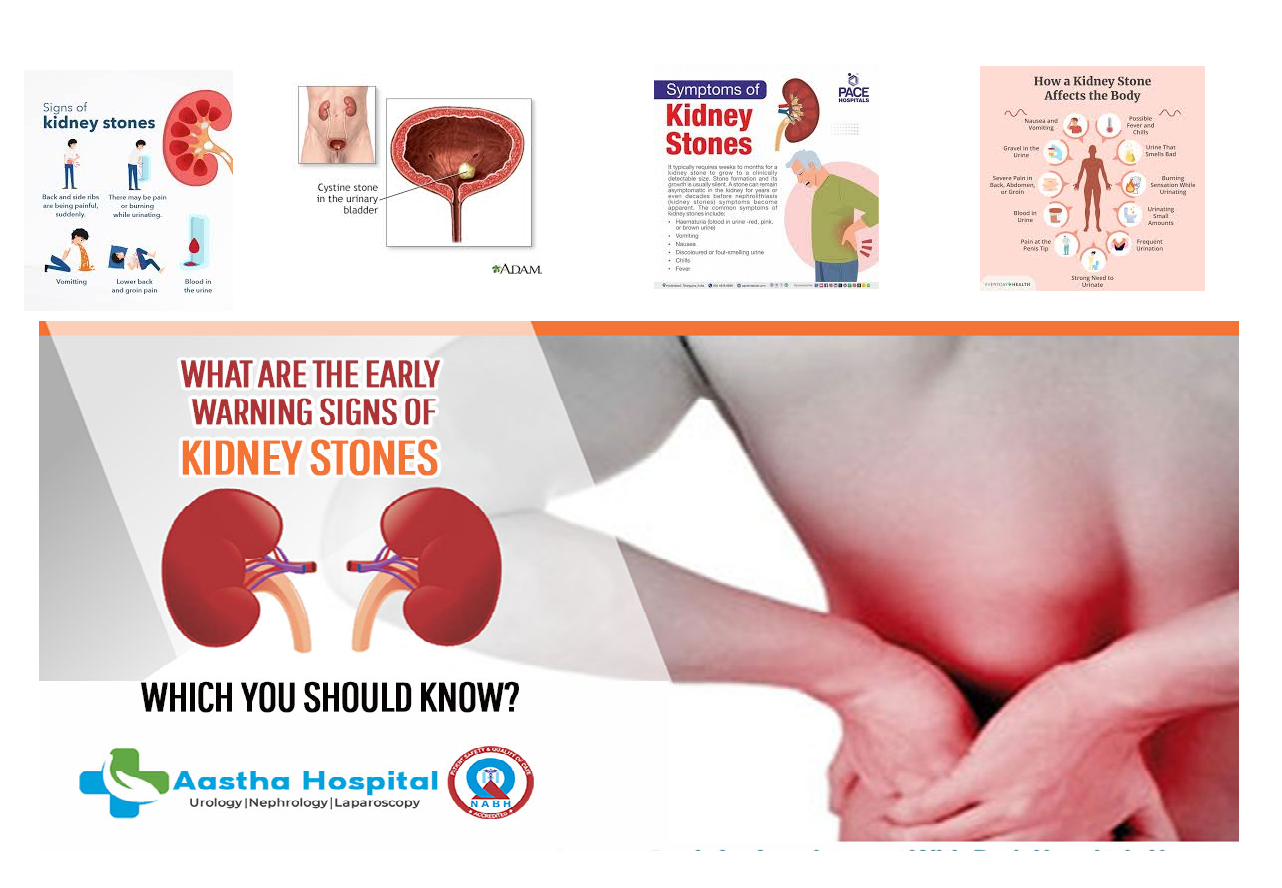Kidney stones are solid deposits formed from minerals and salts inside the kidneys. They can cause significant discomfort as they pass through the urinary tract. Recognizing the symptoms early is important to seek timely treatment. Here are five common symptoms of kidney stones:
- Severe Pain (Renal Colic): Intense pain in the back, side, or lower abdomen, which may spread to the groin. This pain is often described as one of the worst a person can experience.
- Frequent Urination: You may feel the need to urinate more often than usual or experience pain during urination.
- Blood in Urine (Hematuria): The urine may appear pink, red, or brown due to the presence of blood.
- Nausea and Vomiting: The pain from kidney stones can trigger nausea or vomiting.
- Cloudy or Foul-Smelling Urine: A sign that an infection may accompany the stone.
What Are the First Signs of Kidney Stones?
The bolded keyword: What are the first signs of kidney stones?
The early signs often begin with a dull pain in the lower back or side that becomes sharper over time. You might also notice changes in urination patterns, such as more frequent or painful urination. Blood in the urine can also be an early indicator.
How Do I Check Myself for Kidney Stones?
To check for kidney stones, observe your symptoms closely. If you experience sharp, sudden pain in your side, blood in your urine, or frequent urination, it may be a sign of kidney stones. A medical examination, including imaging tests like an ultrasound or CT scan, is the most reliable way to confirm the diagnosis.
How Do Kidney Stones Feel at First?
At first, kidney stones may cause a mild ache in your back or side. The discomfort often escalates to severe, sharp pain as the stone moves through the urinary tract.
What Is the Early Warning of a Kidney Stone?
The earliest warning of a kidney stone is typically discomfort or pain in the lower back or side. You may also notice frequent urges to urinate or see blood in your urine.
What Are the 10 Foods That Cause Kidney Stones?
- Oxalate-rich foods like spinach and beets.
- Nuts such as almonds and cashews.
- Salt in excess.
- Animal proteins such as red meat.
- Sugary drinks like soda.
- Chocolate high in oxalates.
- Rhubarb and other high-oxalate vegetables.
- Processed foods with high sodium.
- Coffee in large quantities.
- Tea with high oxalate content.
How to Clear a Kidney Stone?
Drinking plenty of water is key to helping pass kidney stones. Over-the-counter pain relievers can help manage discomfort. In more severe cases, doctors may prescribe medication to relax the ureter or recommend surgery if the stone is too large to pass naturally.
What Is the Pain Level of a Kidney Stone?
The pain level of a kidney stone is often compared to childbirth or being stabbed. It’s an intense, cramping pain that comes in waves as the stone moves through your urinary tract.
What Are the Three Warning Signs of Kidney Disease?
- Persistent fatigue or weakness.
- Swelling in the legs, ankles, or feet (edema).
- Changes in urination, such as foamy urine or decreased output.
Where Is Kidney Pain Located?
Kidney pain is typically felt in the lower back, either on the left or right side, beneath the ribs. It can also radiate to the lower abdomen or groin area.
At What Time Does Kidney Stone Pain Start?
Kidney stone pain can strike at any time but often begins suddenly, especially after you have been dehydrated or have consumed foods high in oxalates.
Do Kidney Stones Cause Gas?
Kidney stones do not directly cause gas. However, the discomfort in the abdomen may sometimes feel similar to bloating, leading some to confuse the two conditions.
Where Do Kidney Stones Start?
Kidney stones start forming in the kidneys when urine becomes concentrated, allowing minerals to crystallize and stick together.
How Do I Check if My Kidneys Are OK?
Regular checkups with blood and urine tests can help monitor kidney health. If you notice any symptoms like swelling, changes in urination, or pain, consult a healthcare provider.
What Is the First Stage of Kidney Damage?
The first stage of kidney damage often involves a slight decline in kidney function, which may not cause noticeable symptoms. Blood or urine tests can detect early changes in kidney function.
How Do I Know If My Kidney Is Healthy?
You can assess kidney health by monitoring your blood pressure, avoiding foods that strain kidney function, staying hydrated, and having regular medical checkups. Blood and urine tests are the most accurate methods to evaluate kidney health.
Read more:
1= https://rapidurlindexer.net/blogs/what-are-the-worst-perimenopause-symptoms/
3= https://rapidurlindexer.net/blogs/what-are-5-common-symptoms-of-kidney-stones/



